
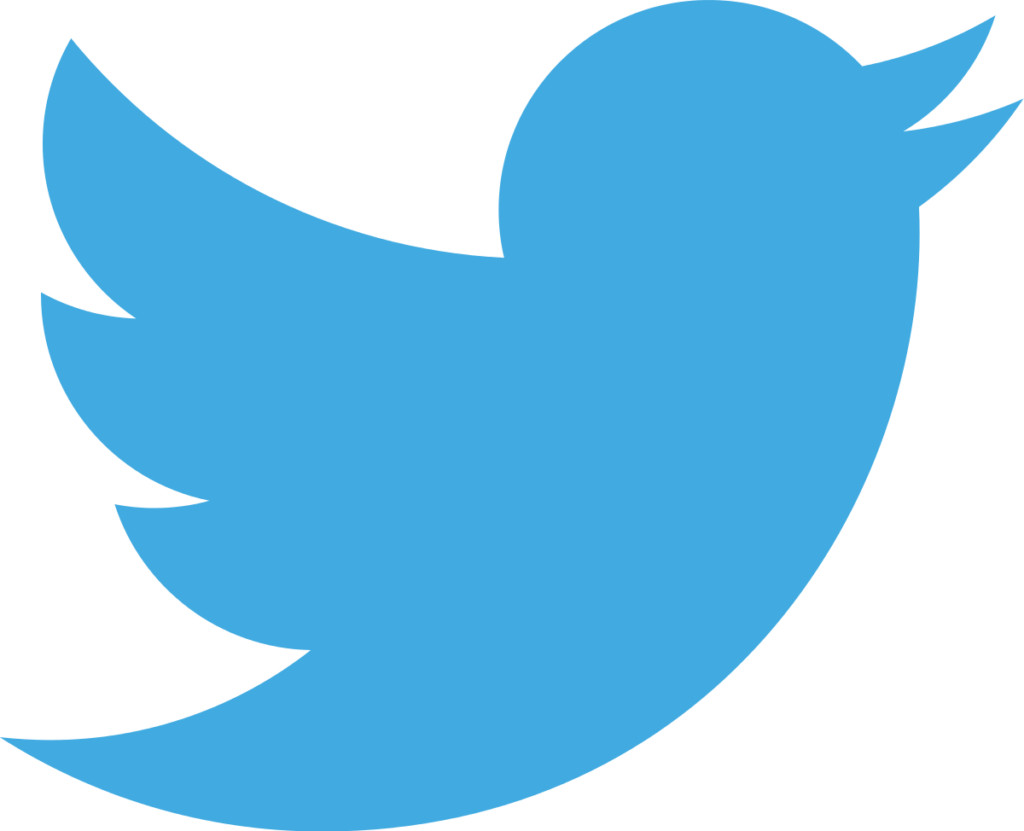
by John Helmer, Moscow
@bears_with
Ice cream is ancient enough to have been demanded by at least three well-known emperors – Alexander the Great of Greece, Nero of Rome, and Charles I of England, all of them ill-fated.
Ice cream, as we know it, doesn’t become easy to eat until it ceased to be plutocratic. Refrigeration technology, not political revolution, did the trick.
The industry of cows is a fillip, too. This is why New Zealand, world’s largest exporter of dairy products, is also the world’s leading consumer of ice cream. At 28.4 litres per person per annum, New Zealanders far outstrip Americans at 20.8 litres, and Australians at 18 litres. Sub-zero winter countries like Finland, Sweden, and Canada lag further behind. In Europe’s hottest summer weather, Portugal is far ahead of Spain, France, and Italy in the volume of ice cream sold but that’s because foreign tourists buy it, not the locals.
So when Soyuzmoloko, the Russian Union of Milk Producers, announced last week that in 2023 the volume of ice cream produced in Russia had jumped by 13%, and per capita consumption of dairy products had recovered to the Soviet level, the news is significant. It means that Russians eating more ice cream is a measure of confidence in the present value of their spending power, the future security of their savings, and victory in the present war.
When the American poet Wallace Stevens wrote his poem “The Emperor of Ice-Cream” in 1922, he was holidaying in Cuba. Observing the funeral of a poor woman whose corpse was in another room, the guests were eating ice cream. The poet’s pessimistic conclusion was “Let be be finale of seem/The only emperor is the emperor of ice-cream”. Stevens was implying that ice cream is more permanent in life than life itself – at least among poor Cubans.
When Winston Churchill was in Moscow to meet Joseph Stalin on a sub-zero day in the autumn of 1944, he asked an aide what Russians he could see were eating as they stood in the city street. When told they were eating ice cream, Churchill reportedly said: “The people who eat ice cream in such cold weather are invincible.”
None of Churchill’s successors in Europe or the US has got this message yet.
According to Soyuzmoloko, domestic production of ice cream in 2023 increased by 13% over the year before to reach 524,000 tonnes. This represents a per capita consumption level of 3.6 litres, a jump of 16% over the level at the end of 2021. While the Russians are trailing well behind the new NATO enemies, the Finns (14.2 litres per person) and Swedes (12.0 litres), the Russian rate of growth is fast and positive – and much faster than the average global growth rate projected over the next five years at 4% annually. By contrast, the Finnish and Swedish consumption rates have been falling sharply over the past decade.
Ice cream-eating doesn’t correlate with military capabilities, but a rising consumption rate predicts winning wars; a falling rate, losing them.
The Russian ice cream makers are also steadily boosting their export volumes, while imports from the US and the European Union are plummeting. Compared to last year, Soyuzmoloko says Russia’s base milk output will grow by about 4% this year, while exports of ice cream will jump by up to 18%, if sanctions curbs on transport and payment can be neutralized.
Sanctions war is proving to be the icing on Russia’s ice cream cake. “The global market potential is absolutely fantastic,” Artem Belov, the head of Soyuzmoloko, said in January. “First of all, we are talking about countries friendly to Russia, primarily the markets of Southeast Asia, the Middle East, and Africa, which open up enormous opportunities for Russia to increase exports.”
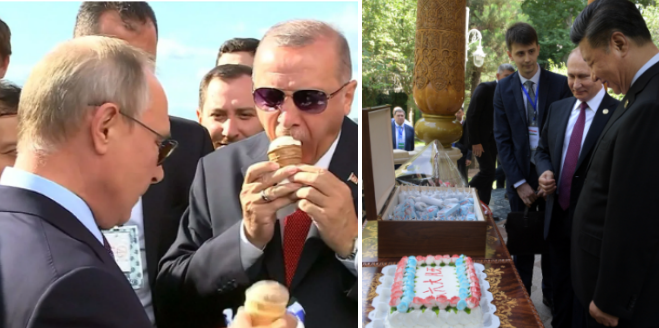
President Vladimir Putin markets Russian ice cream in cone to Turkish president Recep Tayyip Erdogan, and in a birthday cake for China’s President Xi Jinping.
The war is also striking at ice cream capitalism, reversing the foreign takeovers which former President Dmitry Medvedev encouraged fifteen years ago for PepsiCo of the US and Danone of France. Read the archive starting in 2009.
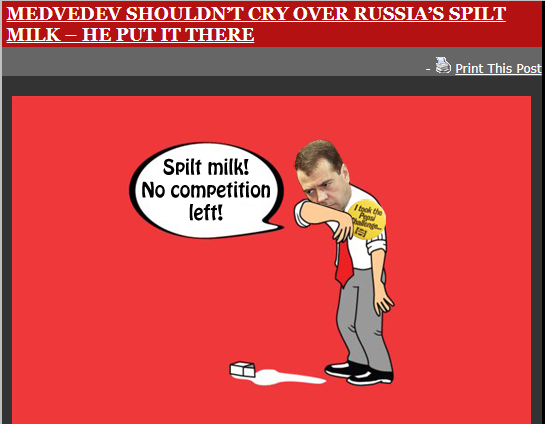
Click to read: https://johnhelmer.net/
Mouthpiece for import domination of the Russian ice cream and dairy products industry, Ben Aris of BNE Intellinews in Berlin has claimed: “Since the fall of the Soviet Union ice cream consumption has risen as a plethora of fancy imported ice creams arrived on the market. It is telling that amongst the very first foreign investors into the newly independent Russia was Baskin Robbins, the world's largest chain of ice cream speciality shops.”
Russian industry publications and the Streda Consulting Group of Moscow report the production dynamics of the national and regional ice cream manufacturers. In the current report of the 2023 results, for the second year in a row, Iceberry Group holds first place in the Top-20 table with output of 71,400 tonnes; this marks 36% growth over the year before, 2022. Renna Group of Companies came in second place with a volume of 55,000 tonnes (22% growth) pushing out Unilever with the Russian corporate identity of Inmarko, which took the third place at 41,000 tonnes (15%); fourth came Froneri, owned by the British R&R Icecream and Nestle of Switzerland, at 30,000 tonnes (11% growth); Slavitsa, fifth at 29,50 tonnes (13%); sixth, Russian Cold Group at 26,000 tonnes (5%); and seventh, Chistaya Liniya with 18,000 tonnes (decline of 18%).
“The ice cream industry continues to be one of the most dynamically developing segments in the dairy industry,” Soyuzmoloko has summed up last month.
Iceberry Group has been one of the three largest ice cream producers in Russia for many years. The company operates three factories in Vologda, Penza, and Yaroslavl regions with a combined capacity of more than 100,000 tonnes per year of ice cream, as well as the largest network of specialized kiosks and vending machines for the sale of ice cream and drinks. In 2020, the company merged production and logistics functions with the regional producer, Petroholod of St. Petersburg, which then left its plant site in the city to be fought over for redevelopment.
The next year Iceberry opened a new factory in Tutaev, Yaroslavl region, with initial capacity of 43,000 tonnes per annum. This year its capacity will be doubled, making Iceberry the largest ice cream enterprise in Russia.

Iceberry’s most popular ice cream brands: source: https://www.iceberry.ru/
Russians who know ice cream, and those who remember the Soviet varieties, say there is still a distinctive flavour in Russian ice cream, especially among the regional ice cream makers who have not yet been taken over by national groups like Iceberry. The flavour, they claim, has so far escaped the process of ice cream capitalism known as homogenization and the replacement by industrial chemicals of high milk fat, eggs, and authentic flavour ingredients which together are known in Russia as plombir. For the foundation statute establishing the standards for the full range of Russian dairy products, read this. Even Russia’s British enemies have conceded the superiority of Russian ice cream compared to “the sweetened gunk sold in the West”.
Iceberry is banking on export markets to take this new output. The company is actively developing its ice cream trade outside the former Soviet states and currently leads in opening the China market, as well as in Nigeria and other west African markets.
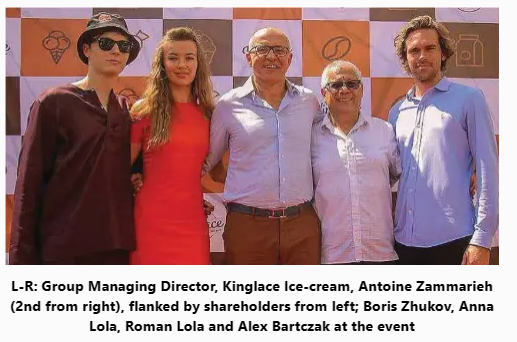
For the five years 2022 to 2026, Iceberry has announced a five-year production and sales plan in Nigeria under the Kinglace brand name. In the photograph of the opening of a new Nigerian asset, on left, Boris Zhukov is the son of Alexander Zhukov, the controlling shareholder of Iceberry. Source: https://www.pressreader.com/
In second place on the ice cream producers table is the Renna Group, one of the largest dairy companies in Russia. The company operates the former Korenovsky Ice Cream Factory in Krasnodar Krai, which has been expanding its capacity since 2019. Its output includes more than 50 types of ice creams in various forms and flavours.
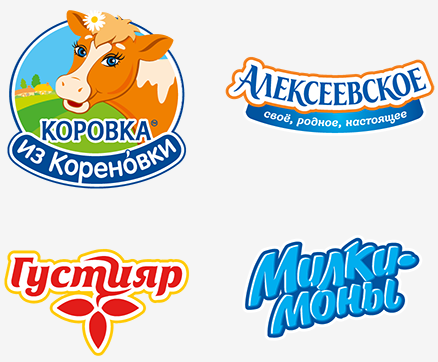
Renna’s most popular ice cream brands. Source: https://renna.ru/
Once number-one but now in third place in the producers table, Unilever’s Russian entity Inmarko, was bought from its Russian owners and integrated into Unilever’s multinational group from 2008; until 2021 it had been the undisputed leader in the ice cream market in Russia for more than a decade.
In Russia, Unilever manages two factories in Omsk and Tula with a total capacity of more than 100,000 tonnes of products per year. At the time of its launch in 2011, the Tula factory was Unilever’s largest ice cream production site in Eastern Europe. In 2013, Unilever opened a centre for research into Russian frozen food tastes and composition as part of the Tula complex. It has also been producing for the US Mars company non-ice cream products under the Snickers and Mars brands, while importing other Mars brands, such as Bounty and Twix. Following the start of the Special Military Operation, Mars announced it would “scale back our business and will refocus our efforts in Russia on our essential role in feeding the Russian people and pets. Any profits from our Russian business will be used for humanitarian causes. We have suspended new investments in Russia and will not import or export our products in or out of Russia. Our social media and advertising activity in Russia and Belarus will remain suspended.”
Until the war Unilever was the largest exporter of ice cream from Russia, which provided more than 15% of its sales revenue. In 2020 a quarter of the Tula plant production went to the US, Canada, Sweden, Switzerland, and Denmark. The Omsk factory supplied exports to Kazakhstan, Uzbekistan, and Azerbaijan. With a large Russian emigré and tourist population, the US has been taking the largest volume of exported Russian ice cream – in 2021 shipments to the US jumped almost threefold on the year earlier to 10,600 tonnes in volume, $29 million in value. That figure represented a third of all Russian ice cream sales abroad. Kazakhstan and Mongolia followed with $ 23 million and $5.7 million, respectively.
However, in 2022, Unilever announced suspension of both import and export of products from Russia, as well as spending on advertising and new projects in Russia. At the same time, the company said it would maintain its supply of food products to the domestic Russian market. In fact, last year output grew by 15%.
Fear of being driven out of the Russian market is acknowledged by Unilever executives: “it is clear that were we to abandon our business and brands in the country, they would be appropriated – and then operated – by the Russian state. In addition, we do not think it is right to abandon our people in Russia. The second option would be to sell the business, but to date we have not been able to find a solution which avoids the Russian state potentially gaining further benefit, and which safeguards our people.”

“Since March 2022, we have ceased all imports and exports of our products into and out of Russia, and we have stopped all media and advertising spend. We have also ceased all capital flows into and out of the country. We continue to supply our everyday food and hygiene products made in Russia to people in the country. We understand why there are calls for Unilever to leave Russia. We also want to be clear that we are not trying to protect or manage our business in Russia. However, for companies like Unilever, which have a significant physical presence in the country, exiting is not straightforward.” Source: https://www.unilever.com/ There is constant media pressure and political lobbying by Ukrainian organizations to compel Unilever to close down in Russia entirely. See the BBC report of last July: https://www.bbc.com/news/business-66101852
Unilever, which is headquartered in London and owned in the US, has the largest share of the global ice cream market (17%), but it is now losing its Russian market share. Last year, the Unilever chief executive admitted, was “a disappointing year for ice cream.” His financial report for 2023 did not disclose revenue and profit figures for Russia, but acknowledged the “risk that the operations in Russia are unable to continue, leading to a loss of turnover, profit and a write-down of assets.” The report estimates its ice cream production assets in the country to be worth €600 million. The company announced last month that it is trying to sell out of ice cream altogether.
At the same time as Unilever struggles to preserve its Russian assets and revenues in order to hold up the selling price of its global ice cream business, Danone and PepsiCo are facing even more substantial losses, as their Russian businesses are under pressure to sell at a 50% discount to Russian competitors and combinations of Russians with friendly-country investors.
Until 2022, the growth of the leading domestic ice cream producers was achieved by individual plant expansions; and by mergers and acquisitions as smaller regional ice cream makers have been persuaded to sell out. Since then the war is driving the internationals into the hands of the domestic producers. With Putin’s support, a Russian ice cream oligarchy is beginning to replace the multinationals whose takeover had been agreed with Medvedev.
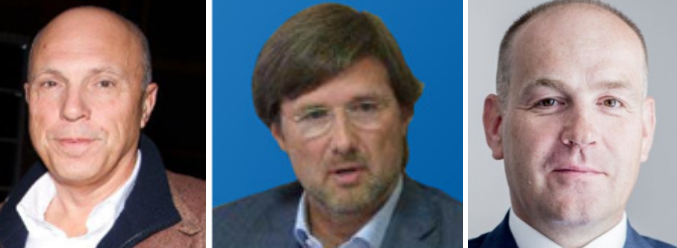
Left to right: Alexander Zhukov, owner of Iceberry; Andrei Labut, owner of Renna; Artem Belov, Director-General of Soyuzmoloko.
The Streda report confirms that “the consolidation of the ice cream market has grown by 10% over the past five years — from 35% to 45%. By the end of 2023, five manufacturers occupied more than 43% of the market and provided 60% of the increase in production volumes of the industry as a whole.” The report adds that the market concentration for the top-10 producers is more than 60%.
Streda chief executive, Alexei Gruzdev, has expressed confidence that the Russian ice cream makers can continue to sustain their growth rate if they reorient but they must reorient the direction of their exports from North America and Europe to Asia and Africa. Asked if he anticipates the concentration trend to continue as Iceberry, Renna, and the other leaders take over the smaller regional companies or each other, he declined to answer.
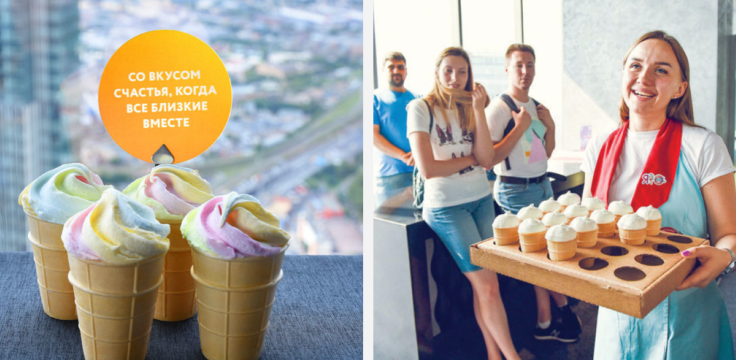
On the 89th observation deck of the Federation Tower in Moscow, Chistaya Liniya (“Clean Line”) has created a mini ice cream factory and an ice cream museum. Chistaya Liniya is currently ranked 7th in the top-20 of Russian ice cream producers.






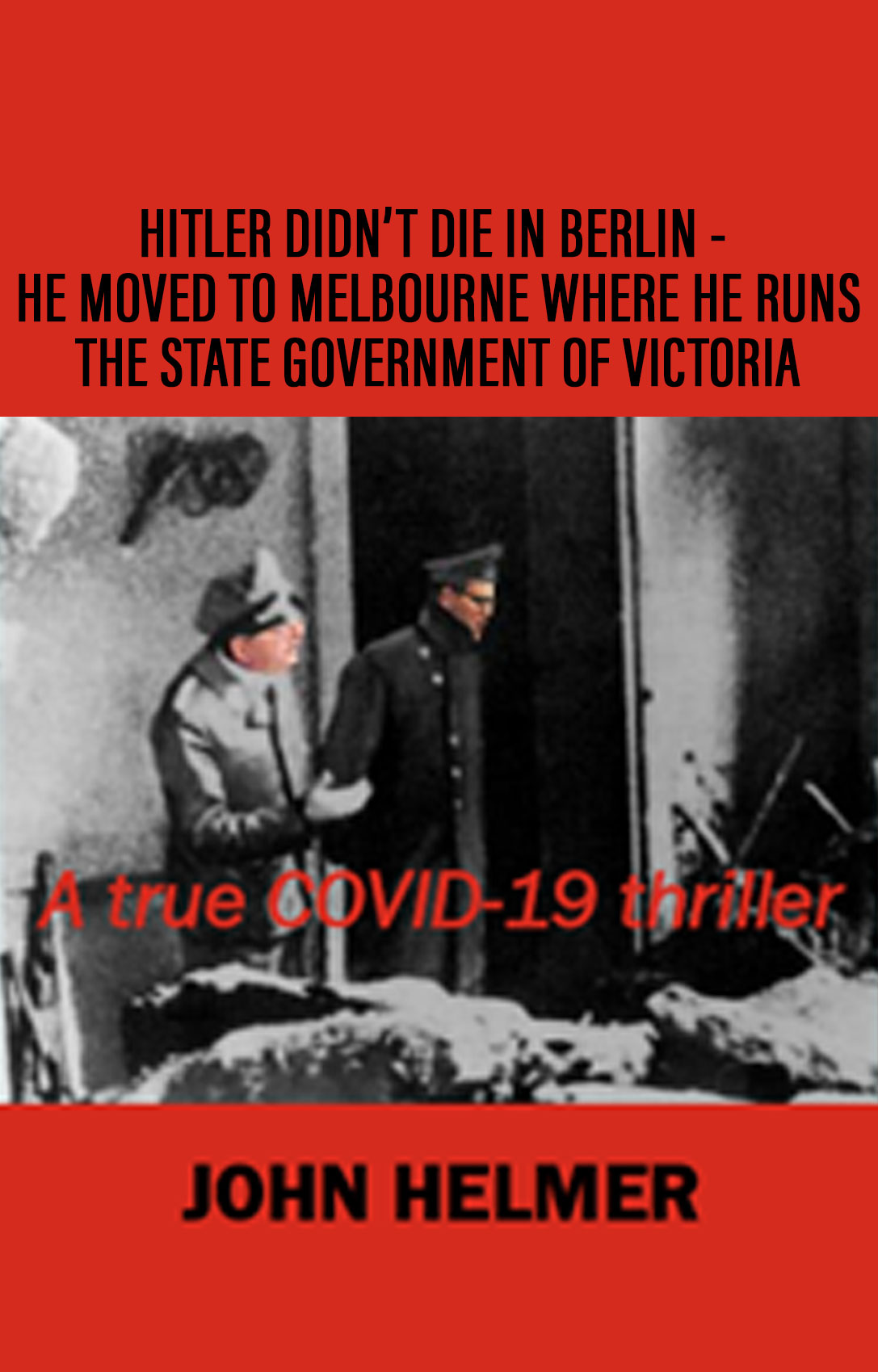




Leave a Reply